Is the Elephant in the Room a Mentally Ill Donkey?
How the Democrat Party Turned Mental Breakdown Into a Political Platform
The Donkey in Breakdown
There was a time when Democrats were just wrong about economics or naïve about human nature. Today’s party isn’t simply mistaken. It’s disturbed. What we’re watching isn’t a political disagreement; it’s a psychological episode on a national scale.
The behaviors are obvious: obsession, projection, delusion, self-harm, compulsion. If one person showed this combination of symptoms, we’d recommend therapy. When an entire party exhibits them, we’re told it’s “compassionate.”
A few generations ago, liberalism was based on ideas, misguided ones perhaps, but still ideas. Now it’s built on trauma, identity, and feelings. The goal isn’t to solve problems, but to feel seen. To be validated. To be affirmed. And if the country has to burn for that to happen, so be it.
They’ll tell you this is empathy. But empathy, detached from reality, becomes a kind of madness. You don’t fix someone’s pain by pretending it’s true. You don’t fix the country by making emotional instability a qualification for leadership.
This is no longer the party of the poor or the working class. It’s the party of people who treat their diagnoses as job qualifications. Who wear anxiety like a medal. Who call themselves brave for having a panic attack on TikTok. They’ve replaced maturity with identity. Discipline with diagnosis. Shame with parades.
And the more voters reject this, the more determined they become to push it. Trump’s second victory should’ve been a wake-up call. Instead, it was treated as trauma. They didn’t recalibrate. They doubled down. Not because it’s working, but because they don’t know how to stop.
This isn’t just ideology. It’s pathology. And the rest of us are being forced to live inside someone else’s emotional breakdown.
The Party of Feelings, Not Facts
Most bad policies come from bad thinking. The modern Left doesn’t even pretend to think anymore. It feels its way through every issue, every crisis, every law. Emotions are not part of the process; they are the process.
Climate policy is built on panic. Racial policy on guilt. Gender policy on confusion. Economic policy on envy. These aren’t rational frameworks. They’re emotional reflexes dressed up as compassion.
When COVID hit, they didn’t ask what the data said. They asked how scared people were, and then they capitalized on that fear. School closures, mask mandates, shutdowns, and vaccine passports weren’t just reactive policies. They were levers of control. Panic wasn’t a byproduct; it was a political tool.
When crime spiked, they didn’t ask what would make streets safer. They asked what might offend activists on Twitter. They defunded police not because it reduced crime, but because it felt like justice. The results were predictable, and they still haven’t admitted they were wrong.
In psychology, someone who cannot regulate their emotions, who swings from fear to rage to denial, is called emotionally dysregulated. When a person lives like that, we call it dysfunction. When a political party does it, they call it progressive.
There is no better example than gender ideology. They’ve convinced themselves that a man’s feelings outweigh a woman’s boundaries. That if a boy feels like a girl, he must be allowed to compete against girls, undress around girls, and be affirmed at all costs. There is no evidence to support it. But the feeling is strong, and in their world, that’s all that matters.
The irony is that the same people who scream “science” are often the first to ignore it. They’ll trust the CDC on masks but not biology. They’ll trust economists on “transitory inflation,” but not the grocery bill. They don’t follow science. They follow feelings, and cherry-pick the facts that match.
When policy becomes a form of self-soothing, don’t expect it to work. Expect it to collapse and take people with it.
Trump Derangement Syndrome: Mass Obsession
There are opponents, and then there are obsessions. What the Democrat Party has with Donald Trump is no longer political. It is psychological. He lives in their minds not as a rival, but as a symbol of unresolved trauma. He is the embodiment of everything they cannot control, and that makes them unravel.
After Trump won the 2024 election, their fixation has not eased. It has escalated. Late-night shows, cable news, academic panels, and protest marches continue to orbit around his name. His very existence sends them into emotional relapse. If he speaks, they scream. If he’s quiet, they speculate. If he wins, they riot.
This is not a strategy. It is a compulsion.
The numbers back it up. A media analysis conducted in the first 100 days of Trump’s second term showed that MSNBC and CNN combined mentioned his name more than 42,000 times. On TikTok, videos tagged “TrumpHate” or “TrumpTrauma” surpassed 300 million views. Professors at more than a dozen universities launched new courses dedicated to “fascism in modern America,” all of which centered on Trump rather than any meaningful historical parallel.
If Trump were a medication, they would call it dependency.
Consider the timeline. For over a decade, they have tried to destroy him. From the moment he entered the race in 2015, through his first term, into his private life, and now into his second presidency, the attacks have never stopped. Two impeachments. A federal raid. Four criminal indictments. Dozens of civil cases. Hundreds of coordinated media campaigns. Two assassination attempts. Despite it all, he won. Again. To a healthy person, that kind of defeat would trigger reflection. Instead, it triggered a relapse.
After the 2024 election, Democrat leaders did not moderate their message. They amplified it. Maxine Waters accused Trump voters of domestic terrorism. Elizabeth Warren called his reelection a threat to democracy that must be “countered at all levels.” Hollywood activists revived hashtags like #Resist and #NotMyPresident before the inauguration even ended. None of this is new. That’s the problem.
If a man cannot stop ranting about his ex-wife five years after she remarried, we don’t call him principled. We call him unstable. We expect him to move on. But when the Democrat Party fixates on Trump for over a decade, we’re told it’s patriotic.
Their obsession is not rooted in strategy. It is rooted in emotional need. Trump is the glue that holds their coalition of grievances together. He allows them to blame, to panic, to posture. Without him, they have to look inward. And they are not emotionally equipped to do that.
This is the real function of Trump Derangement Syndrome. It provides meaning for a party that has abandoned reason. It gives structure to disorder. It gives purpose to pain. But it also reveals something deeper: that the Left needs Trump far more than Trump ever needed them.
When Disagreement Becomes Violence
In a healthy society, disagreements are handled through debate. In an unstable one, they’re handled with violence. What used to be settled with conversation is now settled with fists, bricks, firebombs, and canceled careers, and it’s coming almost entirely from one side.
For years, the Left has justified aggression as moral resistance. “Punch a Nazi” became a slogan. But the definition of “Nazi” quietly expanded to include anyone to the right of Bernie Sanders. That redefinition gave them cover. Once you declare someone evil, you don’t have to listen to them. You can hit them, silence them, chase them out of restaurants, burn down their buildings, and kill them, all while calling yourself a hero.
Antifa didn’t appear out of nowhere. It was the logical result of a political culture that began treating disagreement as a form of harm. College campuses were the test site. Conservative speakers were shut down, smeared, and in some cases physically attacked. Charles Murray, a soft-spoken academic, was assaulted at Middlebury College in 2017. A professor escorting him was hospitalized. That wasn’t the fringe. That was the pilot program.
Fast forward. In the summer of 2020, after the death of George Floyd, more than 570 protests turned violent. Riots in over 140 cities caused upwards of $2 billion in property damage. Dozens of people were killed. Yet media outlets labeled it “mostly peaceful.” Kamala Harris promoted a bail fund for rioters in Minnesota. Democratic mayors told police to stand down. Normal people watched their cities burn while being told it was restorative justice.
It didn’t stop there. Supreme Court justices were doxxed and threatened at their homes. Churches and crisis pregnancy centers were vandalized and firebombed after Roe v. Wade was overturned. Republican campaign volunteers were assaulted. A teenager in North Dakota, Cayler Ellingson, was run down and killed by a man who thought he was a “Republican extremist.” The story vanished from national news within 48 hours.
Then came the killing of Charlie Kirk. In September 2025, during a Turning Point USA event in California, Kirk was assassinated in front of a crowd of students. The accused shooter, Tyler Robinson, wasn’t just politically radicalized. He lived with, and was reportedly romantically involved with, a transgender roommate. Had the roles been reversed, the media would have run saturation coverage for weeks. Instead, it made headlines for a few days before quietly receding. Networks avoided showing graphic video. The story was framed as a random act of violence, not a political signal. Compare that to 2011, when Congresswoman Gabrielle Giffords was shot. That incident dominated front pages and cable news for weeks. But when a high-profile conservative was murdered onstage at his own event, the coverage was cautious, muted, and short-lived. The message was clear: some lives are headlines. Others are just accidents.
None of this is accidental. It’s what happens when one side of the political spectrum treats opposing views not as wrong, but as dangerous. Once you accept that words are violence, you begin to justify real violence in response. The line between emotional reactivity and physical aggression disappears.
In clinical psychology, this is known as intermittent explosive disorder, sudden, disproportionate outbursts in response to non-threatening stimuli. It’s the adult equivalent of a toddler throwing a tantrum because he didn’t get his way. In this case, the tantrums set cities ablaze.
The irony is that the same people who call for tolerance are often the least willing to tolerate dissent. The same people who say “love wins” are quick to turn violent when you disagree. The moment you challenge the narrative, you become a threat, and threats must be neutralized.
This is not just political overreach. It’s emotional immaturity with a Molotov cocktail. And the more they lose power, the more violent their tantrums will become.
Mental Illness as Identity and Weapon
In any rational culture, mental illness is something you treat. In this one, it’s something you brand, and increasingly, something you weaponize.
Depression, anxiety, self-harm, and dissociation are no longer conditions to overcome. They’re badges of identity. Proof of authenticity. Credentials for speaking with moral authority. And nowhere has this inversion been more celebrated than on the political Left.
What used to be private struggles are now public performance. It’s not uncommon to see social bios that read like medical intake forms: “ADHD, PTSD, CPTSD, OCD, she/they, neurodivergent, autistic-coded.” Not only are these labels self-diagnosed, they’re worn with pride, even weaponized. To question them is to commit violence. To ignore them is to erase someone’s identity. What was once a diagnosis is now a personality.
The numbers back this up. A Pew Research study from 2020 found that 62 percent of liberal white women aged 18 to 29 reported being diagnosed with a mental health condition. Among very liberal respondents overall, rates of anxiety and depression are far higher than among moderates or conservatives. According to Gallup, Democrats are more likely than Republicans to report a depression diagnosis. CDC data show that among teenagers identifying as LGBTQ, nearly 70 percent report persistent sadness or hopelessness, and 45 percent have seriously considered suicide. These aren’t just private struggles. They’ve become political assets.
Black Americans have been pulled into the same therapeutic framing. Instead of encouraging strength and agency, modern liberalism encourages a perpetual state of grievance. Concepts like “systemic racism,” “microaggressions,” and “weathering” are presented not as occasional challenges but as proof of constant oppression. Pew data show that Black liberals are more than twice as likely as Black conservatives to attribute personal setbacks to racism and to interpret everyday interactions as hostile. The result is a political culture where victimhood becomes currency. Leaders and activists build careers on it. Media outlets amplify it. And ordinary people begin to see racism around every corner, even where it isn’t, because that’s what they’ve been taught to look for.
This is not resilience. It is a self-reinforcing cycle of grievance. In psychology, living with a constant sense of persecution is called a paranoid attribution style. In politics, it’s called “being woke.”
But the Left does not stop at affirming fragility. It converts it into fuel. Progressive ideology tells the emotionally unstable that they are not the problem. The system is. Their rage is valid. Their paranoia is justified. Their retaliation is resistance. That is not empowerment. It is emotional grooming.
The slogans give it away. “Silence is violence.” “Words are weapons.” “Justice, by any means necessary.” These are not arguments. They are psychological triggers. They reframe emotional discomfort as justification for force. When someone already prone to instability is handed permission to lash out, it should not be surprising when some of them escalate. Whether it’s a protest that turns into arson or a TikTok activist doxxing a political opponent, the behavior is the same. The ideology gave them permission.
Clinically, this is externalization of blame, the refusal to take responsibility for one’s emotions or actions. It is a defining trait of certain personality disorders. Instead of asking, “What can I control?” the person asks, “Who can I punish?” In a therapy session, this behavior would be challenged. In progressive politics, it is encouraged.
This is why so many of the Left’s foot soldiers are not the calm and competent, but the loud, the wounded, and the emotionally erratic. The ideology was designed for them. Not to help them, but to use them. And when their fires burn out of control, the headlines disappear, the case gets buried, and the next broken person is elevated to take their place.
The Trans Shooter Pattern: A Disturbing Trend
For a group that makes up less than one percent of the population, transgender individuals are appearing in high-profile mass shootings far more often than most are willing to admit. Yet when the pattern emerges, the media either goes silent or shifts the story to the killer’s “struggles.” There is no curiosity. No trend piece. No prime-time panel discussion. Because the answers raise questions that cut too close to the narrative.
Audrey Hale walked into a Christian elementary school in Nashville in 2023 and murdered six people, three of them children. She identified as a transgender man. The FBI still hasn’t released her manifesto, despite repeated requests. Maya “Alec” McKinney, who shot up the STEM School in Highlands Ranch, Colorado, in 2019, also identified as transgender. So did Snochia Moseley, who killed several co-workers at a Rite Aid distribution center in Maryland in 2018. Kimbrady Carriker, the Philadelphia mass shooter in 2023, was reported to wear women’s clothing, post pro-trans content online, and praise violence as a solution. Dylan Butler, the Perry High School shooter in Iowa in 2024, identified as nonbinary and wore pride pins on his clothing during the attack.
This is not a coincidence. This is a pattern.
Even with incomplete data, the math is stark. Transgender individuals account for roughly 1 in every 150 adults. Yet at least five trans-identified shooters have committed mass shootings in the last seven years. Their share of mass shooters is many times higher than their share of the population. And that’s just the cases we know. The real number may be larger because identity is often concealed or downplayed in reporting.
Rather than examine this imbalance, the Left insists on covering it with euphemisms. In some cases, media outlets have substituted anonymous or misleading images rather than risk exposure of a suspect’s identity or make gender-based reporting errors. Reporters call manifesto leaks disinformation. Social media platforms throttle any mention of pronouns. In some cases, victims get less sympathy than the killer. When Hale’s identity became public, multiple outlets ran segments not about the murdered children, but about the dangers of “misgendering” the shooter.
Even when a transgender connection surfaces in a high-profile political killing, like the roommate of Charlie Kirk’s assassin, the story is quietly edited, reframed, or buried. The goal is not to inform. It is to protect the narrative.
This isn’t journalism. It’s institutional gaslighting.
In clinical terms, identity confusion combined with unresolved rage and emotional instability creates a volatile mix. Gender dysphoria is already comorbid with anxiety, depression, suicidal ideation, and self-harm. According to a 2022 study published in Pediatrics, over 50 percent of trans-identified youth reported attempting suicide. That number rises even higher among those without stable support. These are not minor warning signs. They are red flags that would trigger immediate intervention if we still treated mental illness as something to be addressed, rather than affirmed.
Instead, trans individuals are told they are under siege from every direction. Every misgendered pronoun is an act of violence. Every policy disagreement is oppression. Activists push the narrative that unless they are affirmed in every detail, by law, medicine, and culture, their lives are at risk. That is not empowerment. That is escalation.
The result is predictable. When emotionally unstable people are told that the world is out to get them and that violence is self-defense, some will act on it. And when they do, they will be shielded by the very institutions that told them they were victims.
We are not saying all transgender people are dangerous. That would be dishonest. But there is a clear, measurable pattern of transgender-identifying individuals carrying out high-profile acts of violence. Pretending it does not exist guarantees more of it.
In medicine, ignoring a dangerous symptom out of politeness is malpractice. In politics, the Left calls it inclusion.
Drag, Delusion, and the Death of Shame
Cultures survive on boundaries. When those boundaries collapse, so does stability. Nowhere is this clearer than in the Left’s attempt to erase the line between adulthood and childhood, between male and female, between private life and public spectacle. What used to be called deviance is now called diversity.
Take drag culture. For decades, drag existed in nightclubs and fringe spaces. No one cared, and no one protested. But when drag queens started appearing in public libraries to read to children, or hosting events at elementary schools, the line was crossed. This was no longer consenting adults in adult spaces. This was performance culture being forced into childhood spaces. Parents noticed. Rasmussen polling in 2023 found that 60 percent of voters opposed drag performances for children, including a majority of independents. Normal people don’t want men in sexualized costumes teaching kids to “be themselves.” They want adults to leave children alone.
The same collapse of boundaries appears in women’s sports. Lia Thomas, a biological male competing in women’s swimming, went from being ranked in the mid-500s among men to a national champion among women. In mixed martial arts, Fallon Fox, a male competing as a woman, broke an opponent’s skull. Across volleyball, track, and cycling, women have been displaced by male competitors who claim a female identity. Public opinion is clear. Gallup polling in 2023 showed that 69 percent of Americans believe athletes should compete based on their biological sex. Yet the Left insists this is bigotry, not biology.
It doesn’t stop there. Schools in places like California and New Jersey now require teachers to withhold information from parents if a child identifies as another gender at school. Some districts provide gender-affirming resources as early as kindergarten. To object is to be labeled a “book banner” or a “transphobe.” But the principle is simple: parents do not want strangers teaching their children to question their gender before they can even read.
This erosion of boundaries is not compassion. It is cultural regression. A society that cannot distinguish between children and adults, men and women, reality and fantasy, is a society collapsing under its own confusion. In psychology, when someone believes they are something they are not and insists others validate it, we call it a delusion. When adults expose children to sexualized performances, we call it grooming. Yet in modern politics, both are rebranded as “inclusion.”
The deeper problem is the loss of shame. Shame is not cruelty. Shame is the boundary that tells a man in a dress that reading erotic-themed stories to preschoolers is not acceptable. Shame is what once told athletes to compete where they belong. Without shame, the culture does not progress. It regresses. And when shame is outlawed, delusion takes its place.
The Democrat Party’s Death Spiral
Elections are supposed to be corrective. When a party loses, it adjusts its message to win back the public. Democrats have chosen a different path. Rather than re-evaluate after Trump’s return in 2024, they have clung tighter to the very positions that cost them power. That is not political conviction. It is compulsive behavior.
The numbers tell the story. Trump won the presidency again. Republicans flipped the Senate to 53 seats. The GOP held the House. Gallup surveys taken in early 2025 show Democrats at just 27 percent party identification, a near-record low. Independents now outnumber both parties and lean right on crime, the border, and gender politics. In other words, the voters who decide elections are moving away from the Left. Yet the Democrats’ response has been more of the same.
Worse than denial is the instinct to blame the voters. After the 2024 losses, prominent Democrats insisted that the public simply “did not understand the messaging.” Some claimed Republican “disinformation” had tricked working-class voters. Others argued that Americans were too blinded by “privilege” or “internalized bigotry” to see what was good for them. Kamala Harris all but said the quiet part out loud: if people disagree, the problem is the people, not the policies. It is the political equivalent of a failing business insulting its own customers for walking away.
The examples are everywhere. When parents pushed back against gender lessons in elementary schools, Democrats didn’t ask whether those policies had gone too far. They labeled parents extremists. When cities rejected soft-on-crime prosecutors, Democrats didn’t admit failure. They accused voters of racism. When border chaos turned swing states red, Democrats insisted that Americans had been “misled”, as though rising crime, overdoses, and overwhelmed hospitals were hallucinations. In every case, the voter becomes the villain for daring to notice reality.
Clinicians have a name for this. It is repetition compulsion, reenacting the same destructive behavior in the hope of a different outcome. Alcoholics do it with another drink. Patients do it with another toxic relationship. Parties do it when they rerun the same losing strategy after a defeat. The Democrats are caught in that loop. They cannot stop, because stopping would mean admitting that the worldview itself is the problem.
That is why this spiral is terminal. It is not just a matter of bad policies. It is the refusal to accept reality and the instinct to punish those who do. Movements that blame the public for rejecting them do not recover. They collapse. And the Democrats, trapped in their own compulsions, are on that trajectory.
The Real Elephant in the Room
If one person acted the way today’s Democrat Party behaves, we would call it unstable. A patient who lashes out at critics, obsesses over an enemy for a decade, ignores reality, and blames everyone else for their failures would be sent to counseling. A family would stage an intervention. But when an entire political party displays those same symptoms, we are told it is justice, compassion, and progress.
The elephant in the room is not Trump, or conservatives, or misinformation. The elephant in the room is that the donkey is sick. Everyone sees it. Voters saw it in 2024 when they rejected the party across the board. Polling continues to show it as independents drift rightward and Democrats shrink to one of their lowest identification levels in decades. Even some within their own ranks admit it. Yet instead of recalibrating, they tell the public that it is the voters who failed to understand, the voters who were misled, the voters who must be re-educated. It is the political version of blaming the victim.
This is what makes the situation so dangerous. A patient who cannot admit a problem cannot be treated. A party that cannot admit reality cannot govern. The Democrats are trapped in a feedback loop of denial and projection, spiraling deeper into policies and rhetoric that drive away the very people they need to survive. The more they lose, the angrier they become. The angrier they become, the more they lash out at the public. And the cycle repeats.
The metaphor is unavoidable. The elephant in the room is pointing at the donkey’s breakdown, and the donkey keeps insisting it is everyone else who has lost their mind. But the truth is simpler. The country is not rejecting Democrats because it has been tricked or confused. It is rejecting them because the public still recognizes the difference between leadership and lunacy. And no amount of therapy-speak, grievance politics, or shifting blame can disguise the fact that the party is in psychological collapse.
This Is Your Wake-Up Call
Don’t Just Scroll, Stand Up
They lit the fire. Now they want you to pretend it’s only smoke.
They’ve turned mental breakdown into a political platform and call it progress.
They’ve rebranded violence as activism, delusion as diversity, and censorship as “safety.”
They target the loudest voices and call it a coincidence.
They smear truth-tellers and call it justice.
They silence dissent and call it democracy.
I don’t have a media empire. I don’t have billionaire donors or gatekeepers.
What I have is this platform, my convictions, and readers like you who refuse to be gaslit.
And now, I’m taking this mission to the next level.
I am in the process of setting up a nonprofit dedicated to combating misinformation, exposing the underlying pathology, and educating the next generation. Think of it as a way to turn these ideas into action, building a movement that equips people with truth instead of therapy-speak. But creating something that lasts takes funding and expert guidance. I can’t do it alone.
If you’ve read this far, you already know what’s at stake.
This isn’t just about one election or one news cycle.
It’s about whether sanity, truth, and freedom can survive a movement built on grievance and intimidation.
It’s about whether we let the “mentally ill donkey” run the country, or whether ordinary Americans finally step in and say, enough.
If you believe the truth still matters, then help me spread it.
Help me keep building a platform strong enough to reach the people who’ve been told they’re alone.
Help me show that reality still has a voice.
Become a Paid Subscriber: https://mrchr.is/help
Join The Resistance Core (Founding Member): https://mrchr.is/resist
Buy Me a Coffee: https://mrchr.is/give
Give a Gift Subscription: https://mrchrisarnell.com/gift
Every click, every share, every dollar matters.
Because they don’t just want to win arguments.
They want to erase reality itself and replace it with their pathology.
I won’t let that happen.
Will you?
One last thing:
My friend and mentor, Jimy Uranwala, runs a free email list that sends out concise, powerful updates on the most important topics of the day. No spam, just critical information to keep you armed.
To get his updates, just send him an email and ask him to add your email to TheJimyShow@outlook.com



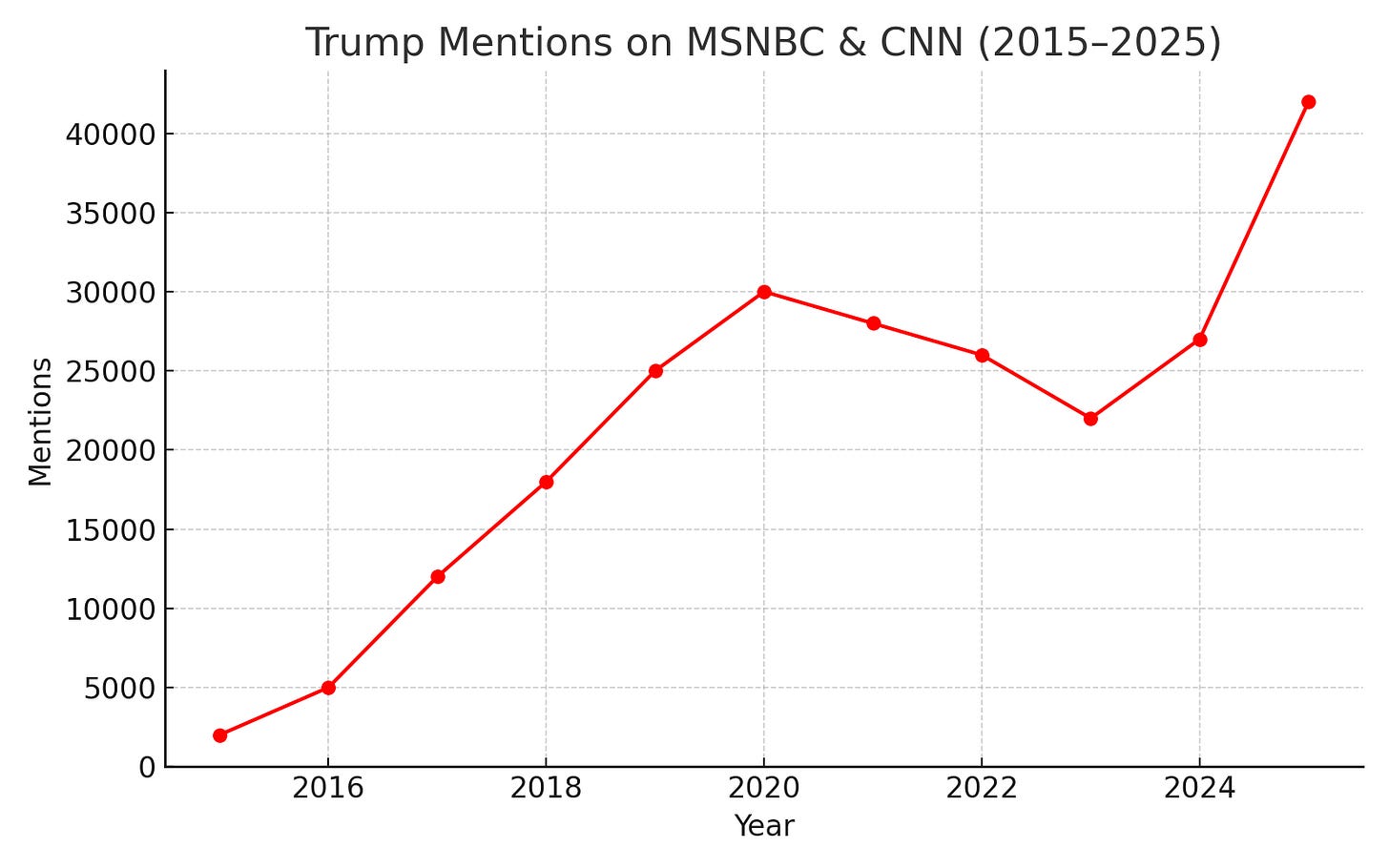
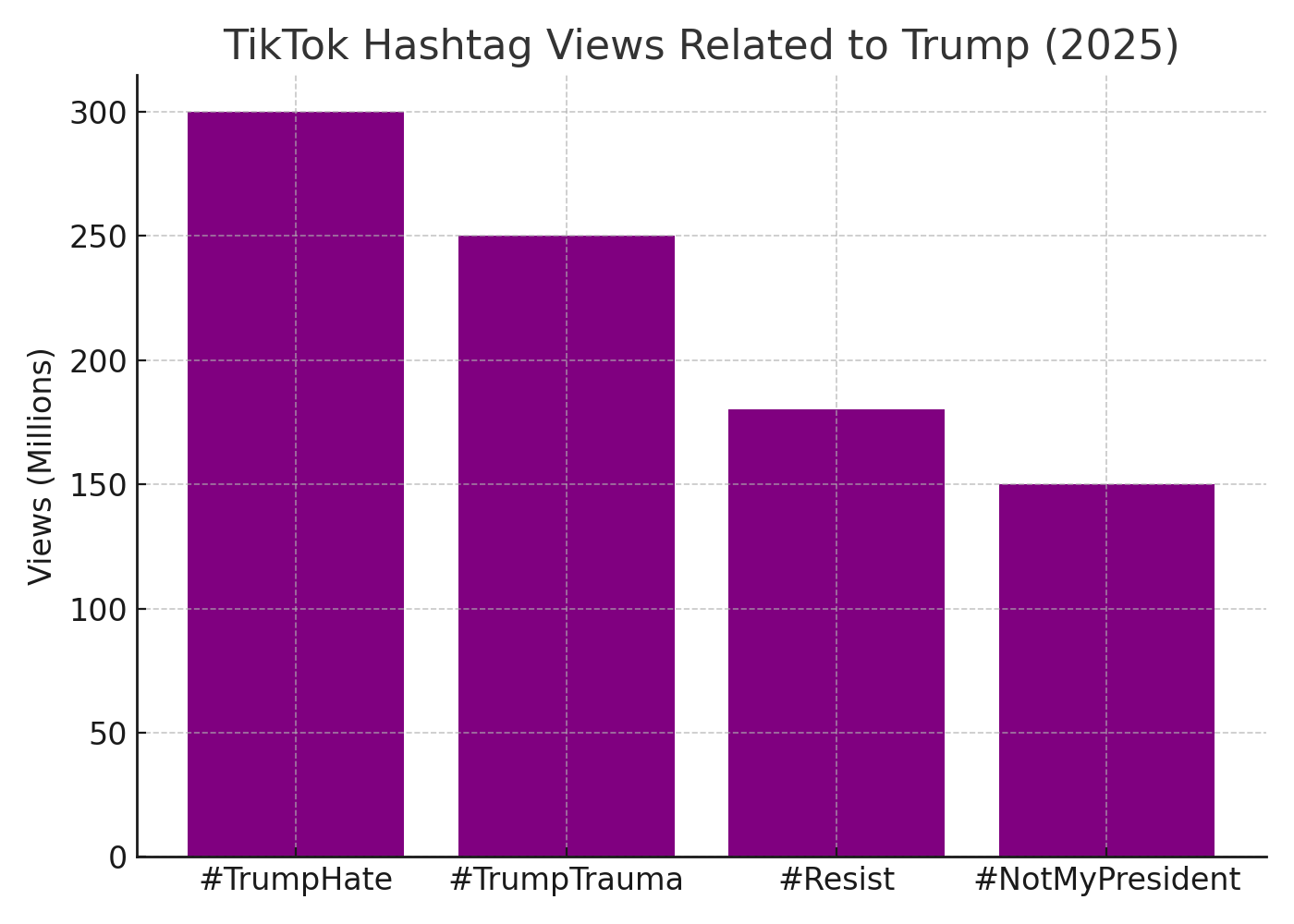
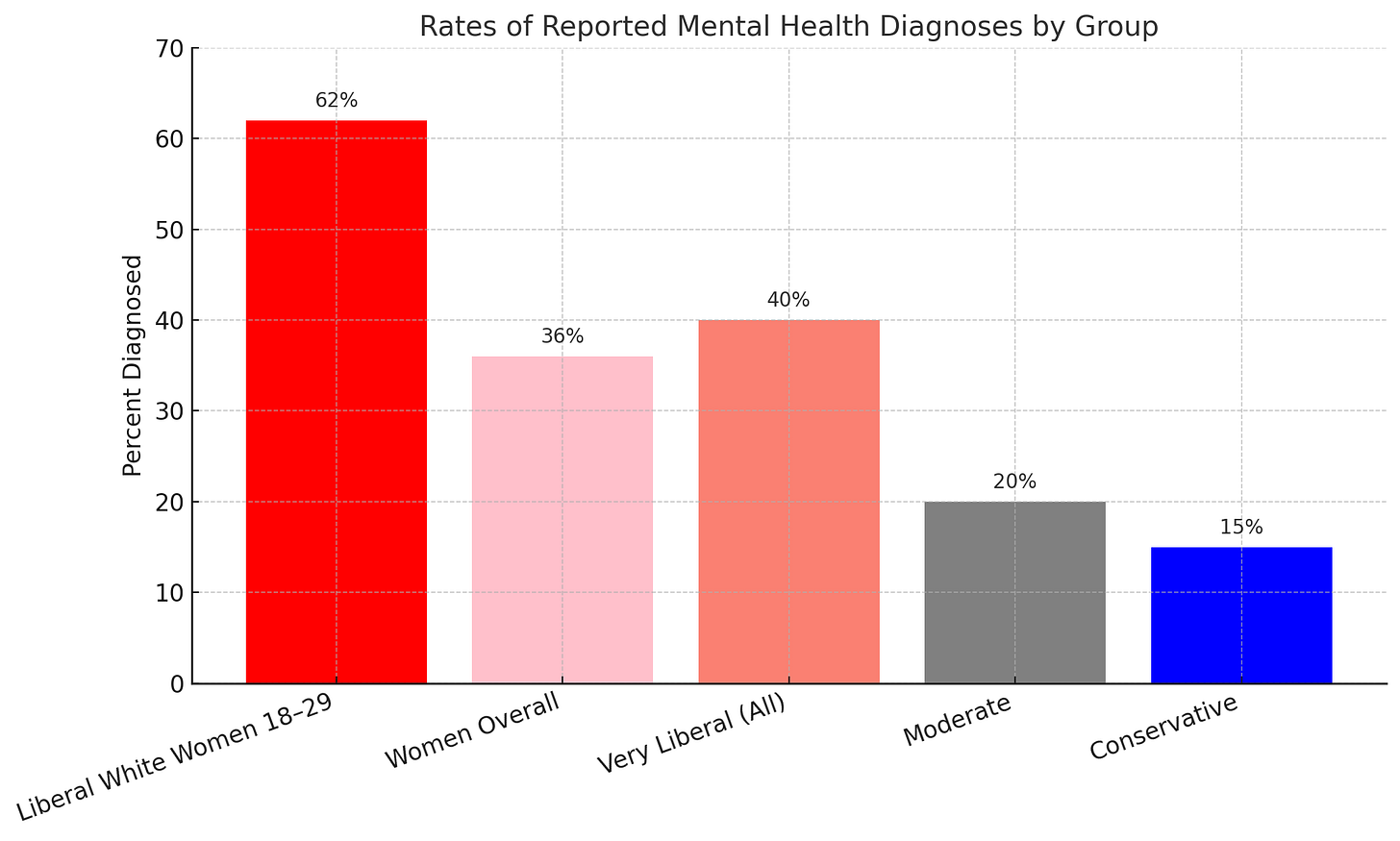
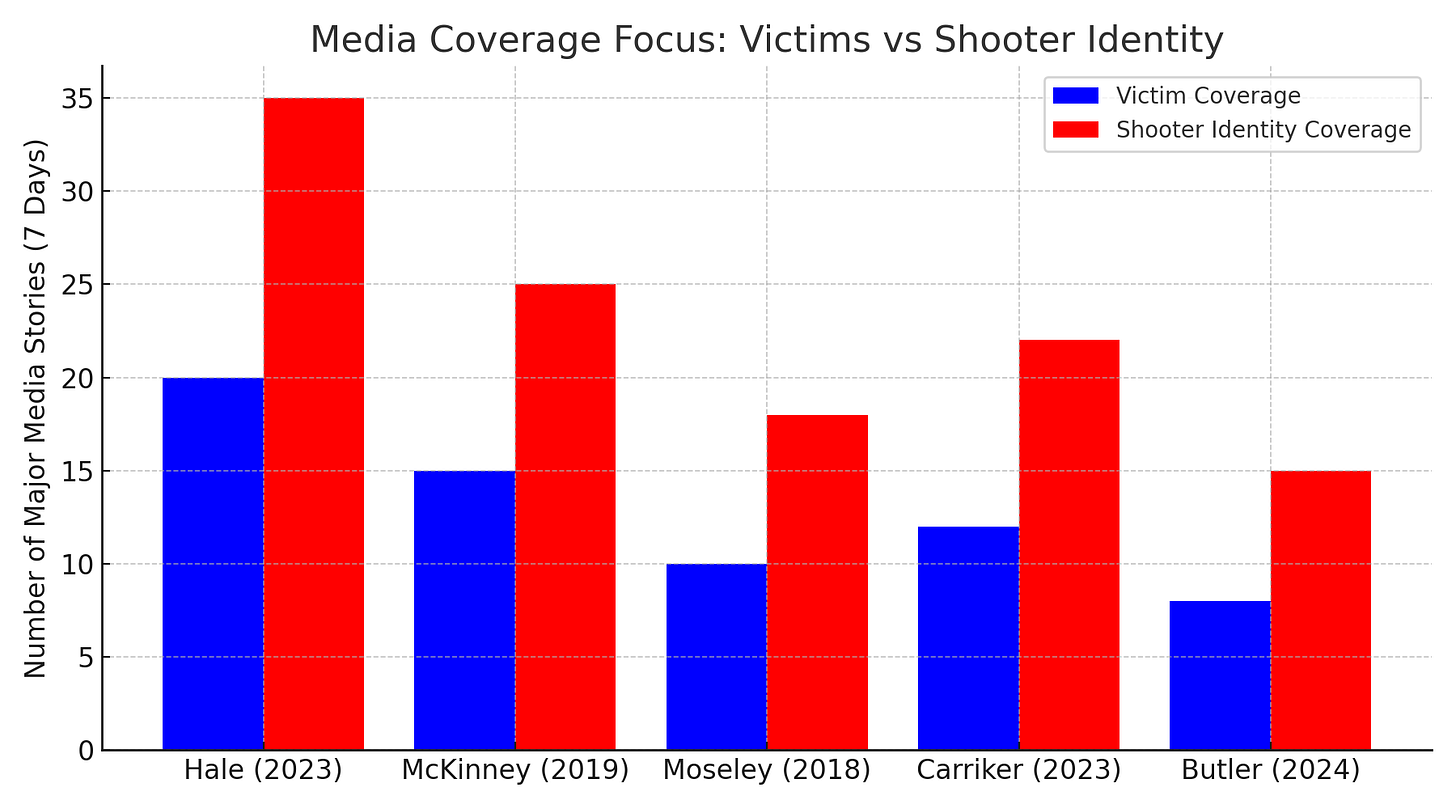
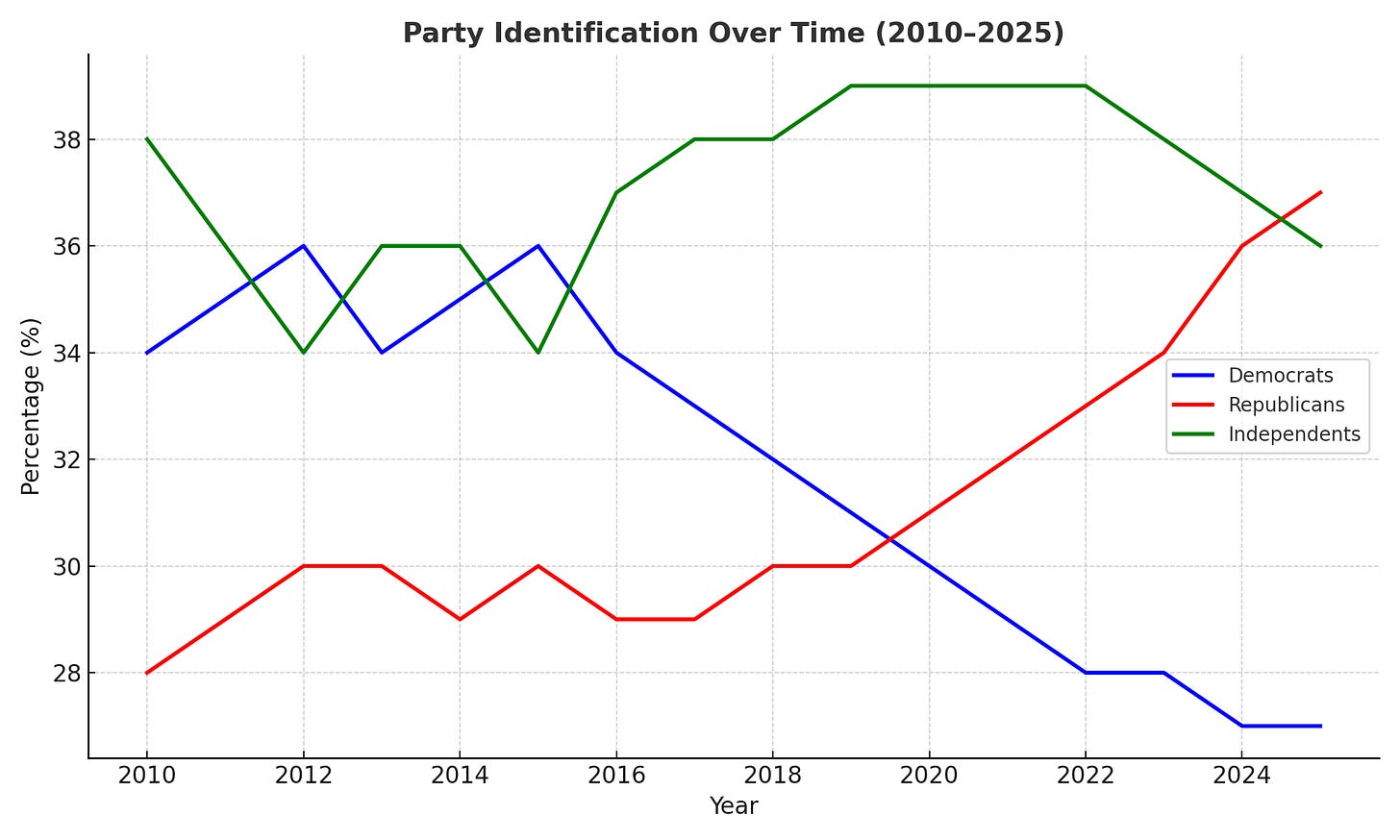
Dutiful column. Thank you. Keep writing. Don’t let the damn bastards get you down.